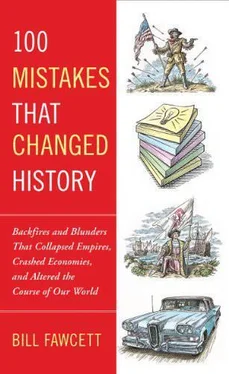Herbert Hoover and the Great Depression
1929
As Herbert Hoover assumed the mantle of president in 1929, one of his most famous assertions had been “We in America today are nearer to the final triumph over poverty than ever before in the history of any land.” Less than a year later the country was in the throes of recession, witnessing a financial crisis that was to cause poverty and unemployment rates to skyrocket. The recession was precipitated by a cyclical downturn in the market but exacerbated by misguided economic policies. It was Hoover’s ineptitude that deepened the crisis. While he somewhat justifiably became a scapegoat for the economic crisis, his failures were not reversed by his successor, Roosevelt, and their combined actions extended the duration of and worsened the intensity of the Great Depression.
Hoover had secured the Republican nomination for presidency in 1928 despite never having been elected to public office. He had attained great fame under President Woodrow Wilson by organizing the rationing of food for World War I and for his humanitarian efforts on behalf of persons starving in the wake of the war. His mystique was enhanced by his extensive role in the Harding and Coolidge administrations as the secretary of commerce, a previously unimportant cabinet position that attained great significance under his watch. He became one of the most instrumental figures in the economic boom of the early to middle 1920s, a period that oversaw an overextension of credit that portended ill for the future. Nonetheless, Hoover was viewed as a wallet-friendly candidate and surged to the presidency despite Coolidge’s lukewarm opinion of him.
While there are many competing theories for the origin of the Great Depression, it is apparent that Hoover did not particularly err in the months leading up to its beginning. In October 1929, on Black Tuesday, the stock market experienced a monumental collapse that precipitated the most severe economic downturn of the twentieth century. While the stock market modestly rebounded in successive months, the crash had a tremendous negative effect on consumer confidence. The decline in stock prices facilitated the bankruptcies of many lenders. Many economic historians suggest the inaction of the Federal Reserve in preventing the collapse of these banks massively exacerbated the crisis.
In June 1930, Hoover signed into law the Smoot-Hawley Tariff Act. This protectionist gesture resulted in a deepening economic crisis worldwide. Hoover’s miscues extended beyond the tariff. Various policies aimed at encouraging job sharing and propping up wages have since been determined to be responsible for close to two-thirds of the drop in gross domestic product (GDP) in the two years that followed the crash. Hoover tried to keep industrial wages too high; the result was that unemployment increased and the GDP suffered. Contrary to many historical critics of Hoover, he rejected the arguments of his treasury secretary, Andrew Mellon, in favor of a laissez-faire response to the crisis that would treat it as a cyclical event from which the economy would naturally rebound. Roosevelt’s policies based on this model are often considered to have increased the duration of the depression by several years.
On Hoover’s watch, unemployment reached almost 25 percent. The number of homeless Americans dramatically increased. This resulted in a proliferation of shantytowns across the country, which were derisively referred to as “Hoovervilles.” Hoover championed the Federal Home Loan Bank Act in an effort to spur the construction of new homes and reverse the tide of homelessness, but his actions were too little, too late. Before the downturn, Mellon had overseen a tremendous decrease in taxes on the upper economic echelon of society—the top income tax rate had been cut from 73 percent to 24 percent. To finance various public works projects later in his term, Hoover largely reversed these cuts; the consequence of such a considerable tax increase was substantially mitigated economic growth.
In 1931, Hoover urged major banks to form a consortium called the National Credit Corporation (NCC). Hoover encouraged but did not force major banks to loan money to smaller banks that were experiencing difficulties. NCC members were understandably leery of taking such actions, and loans were rarely given. A year later, Hoover helped secure the Emergency Relief and Construction Act, a last-ditch effort to increase loans to financial institutions, farmers, and railroads. Though it had little effect at the time, its efforts were extended by Roosevelt.
In 1932, Hoover lost in a landslide to Franklin D. Roosevelt due to his failings on the economy and on Prohibition. The election was pivotal from the perspective that it ushered in a realignment of political views. Roosevelt would be elected four times and oversee a period of Democratic domination in American politics. Considering the crises Roosevelt faced as president (including the Depression and World War II), it is difficult to imagine what the world would look like had Hoover’s ineptitude not assisted in this political revolution. Nonetheless, Hoover’s failings should not absolve his successor. Roosevelt continued many of Hoover’s economically ruinous policies, and in so doing extended the duration of the Depression. Unemployment remained high throughout Roosevelt’s New Deal policies. It was only after the onset of World War II that the United States truly dug itself out of its rut. Nonetheless, Hoover became the electoral scapegoat for his actions; then he later became the historical scapegoat due to the favorable impression many had of Roosevelt’s economic policies. It is for these reasons that Hoover will always be remembered as a humanitarian who became an abysmal president whose economic mistakes changed America and the world forever.
Smoot-Hawley
1930
Few bits of legislation have managed to do the damage that the Smoot-Hawley Tariff Act, passed in 1930, did to the American and world economy. The bill was introduced by the chair of the House Ways and Means Committee, Willis Hawley, and the chair of the Senate Finance Committee, Reed Smoot. The preceding fall, the stock market had crashed, and this bill was an attempt to revive the American economy. To do this, the act created a stiff tariff on more than 20,000 foreign imports. The plan was to suck money from Europe in the form of tariffs and to make European goods more expensive so that American-made items would have a distinct sales advantage. The bill easily passed a panicky Congress and doubled the effective duties on many manufactured and agricultural products.
The real effect of Smoot-Hawley was almost exactly the opposite of its intent. The European nations, seeing their products being virtually locked out of the U.S. market, passed their own protective tariff bills in retaliation. This meant that most American goods up to doubled in price all over Europe. By 1932, the trade war Smoot-Hawley had started was in full swing.
In 1929, the United States had exported about $4.5 million worth of goods to Europe. A million dollars went pretty far in 1930, when a loaf of bread cost $0.09. By 1931, all U.S. exports there totaled only $1.5 million. Two-thirds of all imports from the United States had been blocked out by the protective tariffs passed between 1930 and 1932. Imports to the States diminished just as quickly, going from $5.5 million to just over $2 million by 1932.
But no one bought new American goods from new American factories to replace the more expensive European imports that the Smoot-Hawley bill blocked out. Had they been able to do so, it might have worked. The reason they could not was that many of the consumers no longer had the money to buy much of anything. This was because of the millions of jobs lost as factories closed because they no longer could export their products to Europe. The unemployed were unable to buy American-made goods, much less more. Job losses made the Depression much worse. Not only were the jobs at the exporters lost, but many American jobs were gone as well. The American agricultural sector also largely depended on exports, and so protectionism made it impossible for farmers to sell their crops. This forced down the price paid for agricultural products. Lower prices put many farmers and farm workers out of work and cost thousands of families their farms.
Читать дальше












